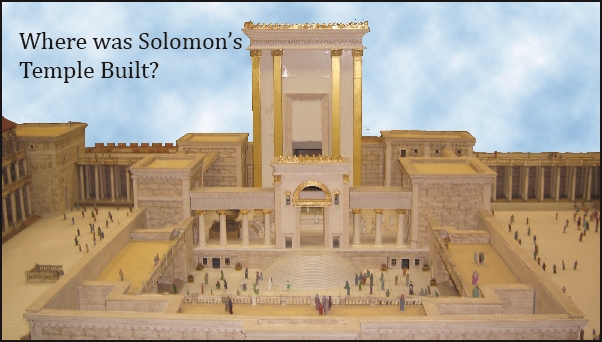By Tyson Thorne

Back on October 23 of this year I made a passing reference to the location of the temple in Jesus’ day and hinted that it might not be where we have been thinking for a good many hundreds of years. Before too much time passes I want to address this issue, and especially as it has some bearing on other issues to be discussed this holiday season. Of all the articles we’ve posted here on Think-Biblically.com this is one you will probably want to bookmark.
Today it is believed that the temple of Jesus’ day stood on the Temple Mount in Jerusalem. But evidence from Acts chapter 21 seems to indicate otherwise. If you go back and read the account of Paul’s arrest in Jerusalem at the end of his second missionary journey we see that a Roman fort exists on a piece of land that looks down on the temple. There is no land in Jerusalem with such a view of the Temple Mount, certainly not close enough for the Roman guard to witness the commotion in the temple and get to Paul in time to save his life from the angry mob. This presents a problem for the Bible scholar who believes the Scriptures to be inspired and free from error.
There is another problem for the close reader of the Bible, however, and even more glaring than this passages topographical problem. In Matthew 23 Jesus is speaking in the temple courts and then leaves the temple after issuing a series of “woes” against Jerusalem. In Matthew 24.2 Jesus says to his disciples about the temple that not one stone will be left atop another. If the Temple Mount is the site of the actual temple, this prophecy did not come true as there are a great many stones still standing, a portion of which make up the Wailing Wall. I have been there myself, and even under the Temple mount, and can testify to the fact that the wall runs some 30 feet underground. Did Jesus make a mistake?
Dr. Ernest Martin, a renowned and controversial archeologist, in his book The Temples that Jerusalem Forgot (1999) asserts that the temple mount was not the location of the Jewish Temple, but rather the Roman Fort mentioned in Acts 21. As he had conducted excavations on and around the temple mount from 1969 to 1973 he is an authority on the area. As evidence for his supposition he cites the remaining foundations of whatever structure was built there is about 36 acres large, which corresponds to the 35 acre pattern of most Roman forts. Conversely the temple was about 12 acres in size. Assuming Dr. Martin is right, where then would the Temple have stood?
According to the Old Testament the temple was built in the City of David, also called Zion, also known as Bethlehem. 1 Kings 1.32-40 tell us Solomon was anointed King of Israel at Gihon, a region identified by its water source, the Gihon Springs. The springs were underground and are famous as the entry point for David’s conquering of the original city. Indeed, Hezekiah’s Tunnel, which has been found at this location, is part of the second temple. This region is very near the city of Jerusalem and would have been within its walls during the time of Jesus (third temple period). This is also the area in which Jesus was born and is in full view of the Temple mount and Dome of the Rock.
Both Biblical and archeological evidence appear to put Solomon’s temple, and the other temple’s that followed, in a place different than we believe today. One cannot due full justice to this topic in a single article, but if this topic intrigues you, I recommend reading the book Temple, by Bob Cornuke.
|
|
|